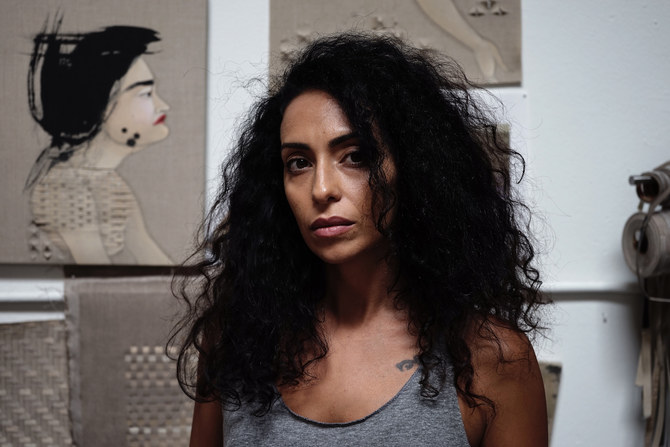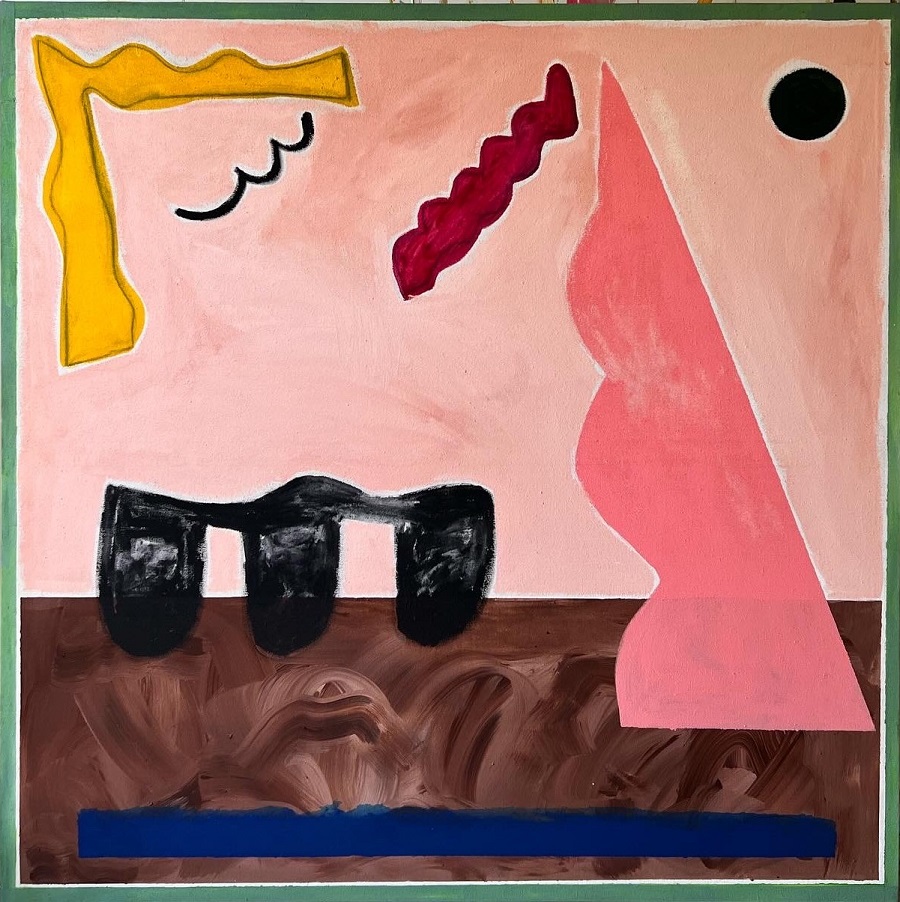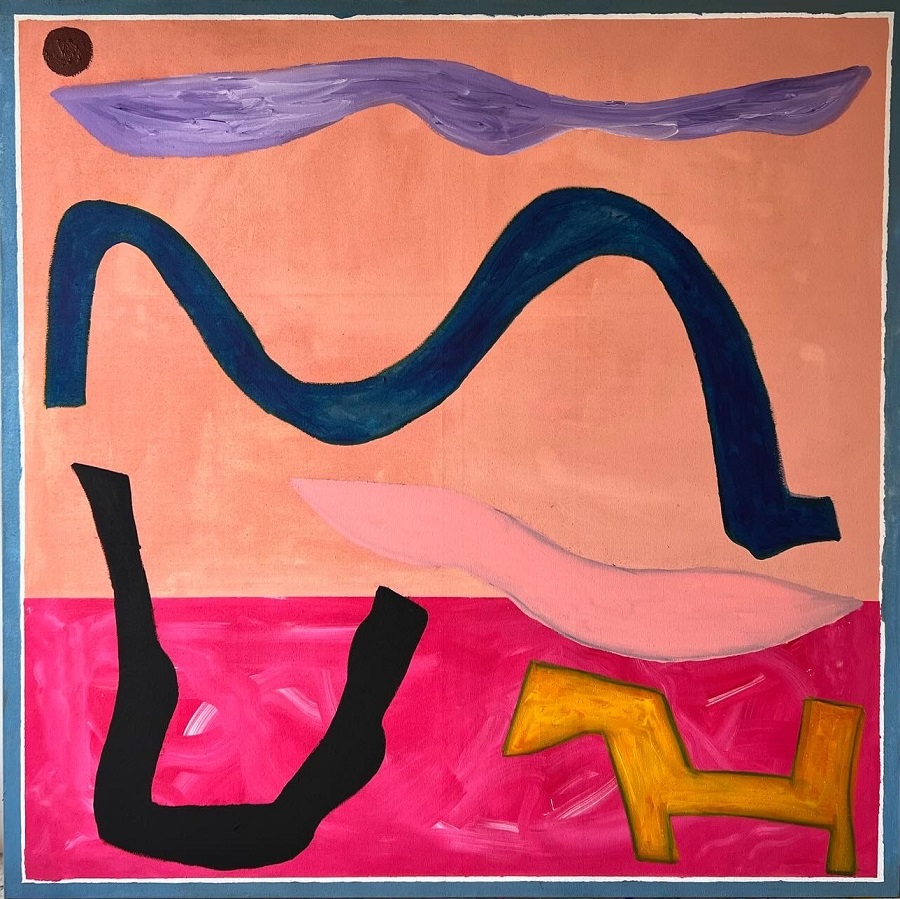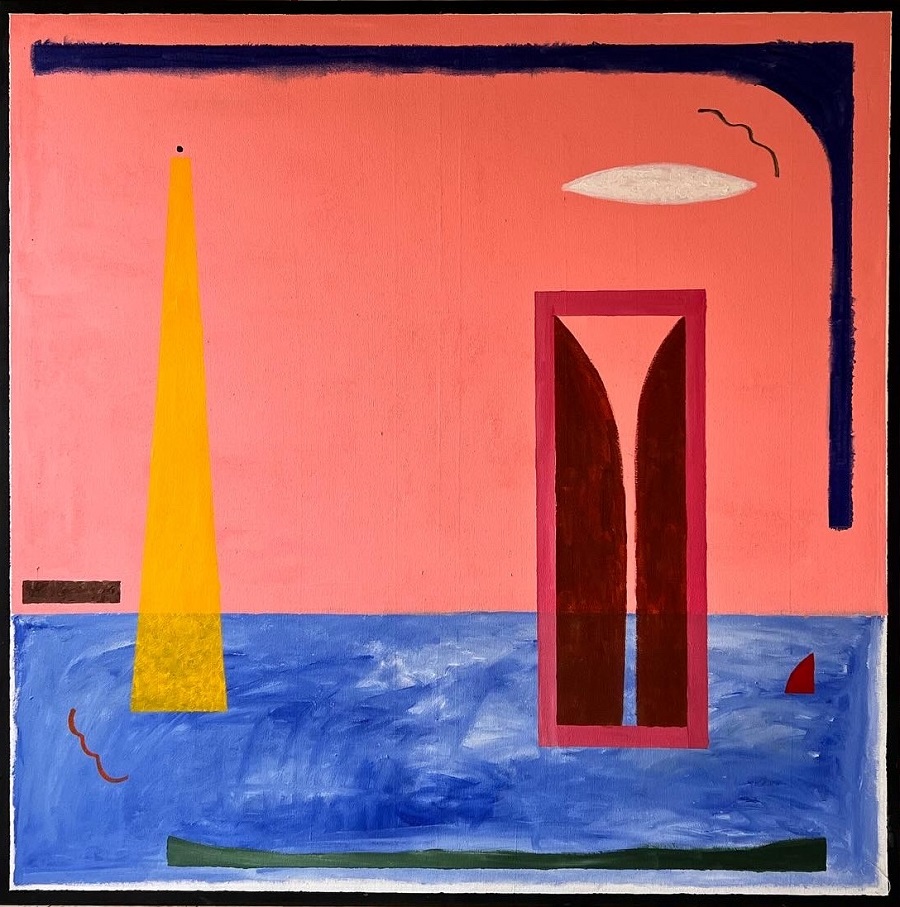DUBAI: The latest exhibition from Los Angeles-based Iraqi Kurdish artist Hayv Kahraman, on show at Dubai’s The Third Line gallery, is called “Gut Feelings: Part II.” The title is both instructive — the majority of works depict a female figure, or figures, with a knot of guts spilling from some part of their bodies — and allusive, as the show is informed by Kahraman’s exhaustive research into the gut microbiome and its effect on our mental and physical health, as well as by her own experiences of trauma. The imagery somehow manages to be unsettling, funny and comforting all at once.
The most immediate influence from Kahraman’s own life on this body of work was her mother’s diagnosis with lung cancer, which she received in 2018.
“That’s when I started digging into the biosciences and immunology,” Kahraman tells Arab News. “My mom was a naturopath, she tried a lot of alternative (medicine). If my mom were alive, she would have so much input into this. And it is a way of getting closer to her; it’s all connected to this work.
“I started with immunology and I was struck by how militaristic the language was. You’re ‘fighting cancer.’ You’re constantly at war with your body, you know? Why can’t we have something that’s looking at it as more of a journey, rather than something you’re fighting against? I really reacted to the semantics,” she continues.
“From immunology I shifted into microbiology, and that’s where this (show) was born. I really got into a rabbit hole,” Kahraman explains. “There are ecosystems of microbiota all over our bodies; inside, outside, around. There’s something called aura microbiota, so right now, as we’re sitting next to each other, my microbiota is mixing with your microbiota, which is just beautiful if you think of it, because then all of these notions of ‘us and them’ or where I end and you begin — these dichotomies — shatter. I found out — and this was mindblowing — our bodies have a 1:1 ratio of human cells and microbial cells. So where do ‘you’ start and where do ‘you’ end? You’re equally other: microbe, germ, dirty. As somebody who’s been an immigrant, a refugee, ‘othered’ in so many ways, I’m constantly thinking about difference. So with the microbes, it was, like, ‘Ooh, these are my friends.’”
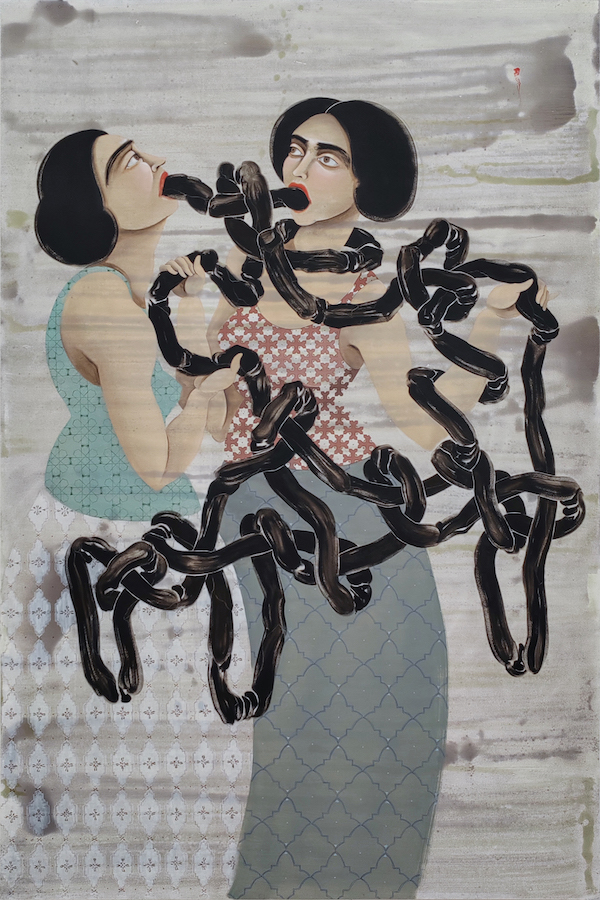
Hayv Kahraman, Feeding on entanglements, 2022. (Supplied)
Kahraman was born in 1981 and grew up in Baghdad. Her mother worked for the United Nations and her father was a university professor. “My parents were very liberal. We had a little playroom in our home that we could paint all over; walls, ceiling, doors. That was very empowering. That room was filled with all kinds of stories — our concerns, things that we wanted to celebrate,” she says.
Her parents also hosted regular soirees attended by Iraqi creatives. “I’d sit in the room next door and do these quick gestural paintings, and every now and then one of these creatives would come in and look at my painting and give me a mini critique. And that was amazing; to get that from multiple voices,” she says. “That was pivotal to my life.”
The family fled Iraq to Sweden when Kahraman was 10, after the first Gulf War. They arrived as undocumented refugees and were eventually granted asylum. “I went through a process of assimilation when I arrived; I wanted so desperately to belong and become Swedish,” she says. “And when that happens to you, you’re robbed of who you thought that you really were; whatever that is. I did everything I could to become Swedish; dyed my hair, had a perfect accent, so I didn’t sound like an immigrant. And that’s a very violent thing to undergo, because you really are erasing something. This is something I revisit in my work all the time; I’m so concerned with not being erased. ‘I’m here. I exist. Listen to me. Hear me. See me.’”
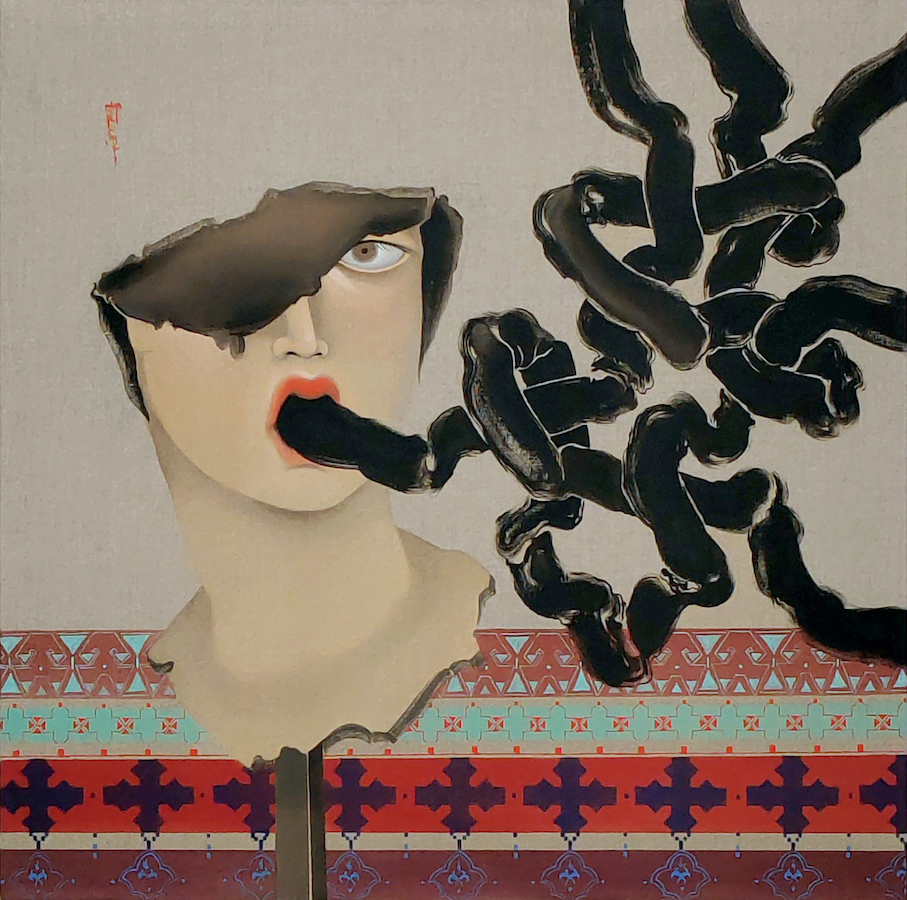
Hayv Kahraman, Neurobust, 2022. (Supplied)
That, she says, is why the female figure in “Gut Feelings: Part II” has been recurrent throughout her work. It was first created in Italy, where she moved to intern as a librarian at an art school. There have been many “transmutations” of the figure, however. In 2007, for example, at the height of Iraq’s sectarian violence, when thousands of people were dying there each day, Kahraman had just moved to Phoenix, Arizona. “I was consumed by guilt, being in this country that was currently at war with my own. So the work was very violent — you had women setting themselves on fire, women hanging themselves...” She was also in an abusive relationship at the time, although she says it took her many years to realize it, “but it came out in the work.”
Having lived through so much trauma, it’s unsurprising that Kahraman describes herself as having a tendency to be “very dark” and to regularly become obsessed with certain topics (such as microbia).
“If I could, I would just live in my obsessions,” she says. “My work is about working through things — trauma and those obsessions. Why am I obsessing about the microbiome, and health, and torshi (fermented beetroot, which features heavily in the show, and is rich in ‘good’ bacteria)? My mom used to make torshi when we were kids and we used to paint with it. I didn’t consciously link it at first. The academic research came before, and then I’m like, ‘Oh my god. Yes. That’s why I’m here…’”
She stresses, however, that as much as her art doubles as therapy, it also brings her joy. And there is lightness in the exhibition too — the comic book-style gut-spillage has a certain humorous appeal.
“I am trying to channel that levity. I think I’ve got a nice balance between the really grotesque and… I wouldn’t say beauty, because that’s subjective. I’d say, connection, maybe,” she says. “I wanted the audience to walk in and feel like they’re inside the body and that it’s comforting and that there’s compassion and healing and that it’s a safe space.”



